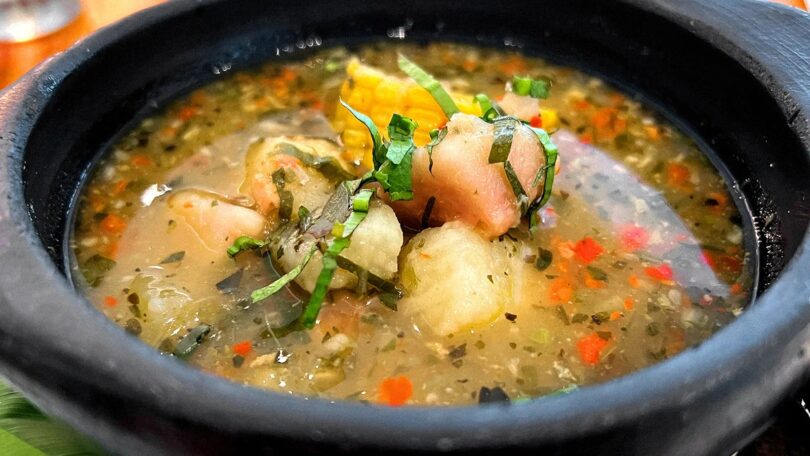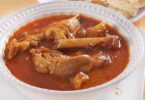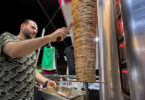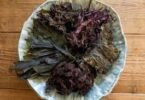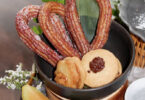Erik Trinidad
Sancocho may be ubiquitous across Latin America, but no two recipes are the same. That’s because the primary ingredients of this hearty soup – meat, vegetables and tubers – are as broad and as varied as Latin America itself.
Perhaps that’s why the name of the dish is so generic; sancocho is derived from the Spanish verb sancochar, meaning to cook in liquid. Nevertheless, when you look at the different countries where the dish is made, you’ll find sancocho recipes vary based on regional ingredients, seasoned to comfort local palates.
In Puerto Rico, sancocho is a tomato-based beef stock with corn, potatoes, cassava, calabaza squash and beef. In the Dominican Republic, one recipe calls for “seven meats”, including goat, ham and pork sausage. In Panama, where it is considered the national dish, sancocho is a nostalgic panacea of poultry and produce.
Before modern shipping methods, ingredients varied by regions within Panama – thus, each sancocho recipe was unique. Nonetheless, the base recipe, which is arguably considered the “national” one, is the original that hails from Chitre, a town on the Azuero Peninsula, according to Panamanian culinary anthropologist and chef Charlie Collins. At his restaurant T’ACH, in the western highland town of Boquete, the esteemed chef – who many consider the “Godfather of the new Panamanian kitchen” – includes corn and local root vegetables from the surrounding areas in the province of Chiriquí, where most of Panama’s crops are grown.
“[Sancocho is made with] young hens (gallina) cut up into parts, onions, garlic, culantro [sawtooth coriander], oregano, salt and pepper to taste,” he said. “Also, malanga (taro root), ñame (Caribbean yam) and criollo chilli pepper – which adds flavour, but is not hot.”
Collins’ recipe for sancocho de gallina is one of many in his influential cookbook, T’ACH: Authentic Panama Cuisine, published in 2016. The word T’ach, borrowed from an Indigenous word for food (and also the namesake of his restaurant at his family’s generations-old Hotel Panamonte) is the result of his years-long exploration of Panama’s multicultural and indigenous culinary traditions.
After working in kitchens overseas in his early adult career, Collins returned to his native Panama and studied in places where food was still prepared in traditional ways: Indigenous tribal villages, Afro-Caribbean communities and households still holding onto their gastronomic culture since before the Panama Canal bridged the East and West in 1914. He compiled his research into his collaborative and comprehensive cookbook, which ultimately spearheaded a movement among his peers of contemporary chefs to not only rescue but elevate lost recipes of Panamanian cuisine at the modern dining table.
That said, sancocho has been such a part of Panamanian culture that it was not on the endangered recipe list. Today, most Panamanians have fond memories of eating sancocho for as far back as they can remember, each bite sparking nostalgia.
Veteran chef and cookbook author Cuquita Arias recalled her childhood. “I remember vividly when my family served sancocho at our house in El Valle to all farmers that, at midday, came down to mass from the mountains after working all day in the fields on March 19, Saint Joseph Day.”
Family traditions centred around sancocho continue today. “It is not unusual to see families spend the day by a river and prepare sancocho from scratch, over a wood fire,” Collins said, referring to the traditional Panamanian family picnic known as a matanza. “Three stones are placed to form a triangle where the big pot or paila sits, and the sancocho is cooked on an open fire pit.”
It’s the smouldering of wood that adds a smoky flavour to the soup, and it’s the fat of chicken skin that can make the stock thick and hearty. Further embellishments include the sides; sancocho may be enjoyed with patacones (fried plantains) or white rice with guandú (pigeon peas). Whichever way a rendition is served, it should be done in good company.
“We always ate [sancocho] for lunch at a family gathering, and we served the broth and ingredients individually as my family tradition did, including hot sauce and fresh lime,” reminisced Arias.
However, the dish isn’t just the centre of attention at a family occasion, but also the following morning. “Clients have sancocho the following day after a big party, be it a wedding or any celebration,” Collins noted from his catering experience. “It’s Panama’s most sought-out dish to recover from partying the night before.”
“It is easy to make, with popular ingredients,” Arias commented on its simplicity. “And it’s very filling.”
“I consider it one of my favourite soups,” Collins said.
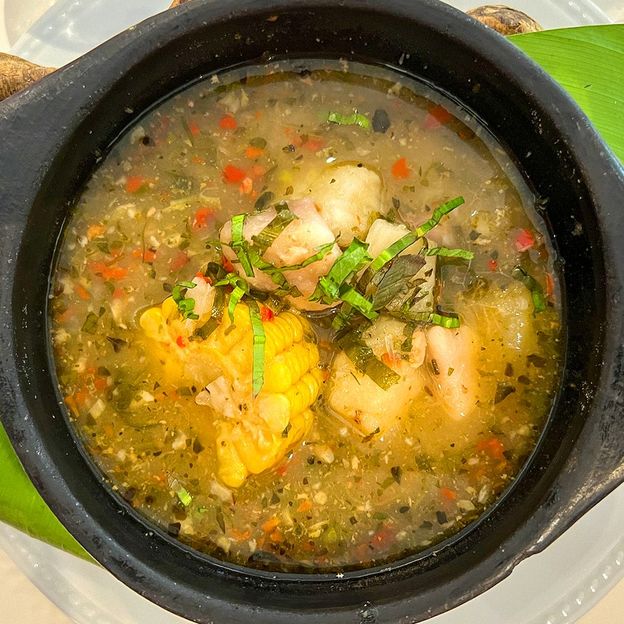
Today, most Panamanians have fond memories of eating sancocho (Credit: Erik Trinidad)
Chiriqui-Style Sancocho recipe
Serves 6
Method
Step 1
Cut the young hen or chicken into 8 pieces, leaving the skin intact. Chop 4 of the culantro leaves (or if using coriander, chop 3 tablespoons of the leaves).
Step 2
Heat the oil in a heavy pot over medium heat. Season the chicken with salt. Add the chicken to the pot with the peppers, onion, garlic, and the chopped culantro and oregano. Cover the pot and sweat the seasoned chicken for 20 minutes.
Step 3
Add the black peppercorns and enough water to cover the chicken, then cover and cook over medium-high heat for 2 hours, or until the chicken is well done and tender when pricked with a fork. (It is important that the meat be fully cooked but not falling off the bone, as this would harm the soup’s flavour. If necessary, you can add water as it can evaporate during the cooking process.)
Step 4
While the chicken is cooking, shuck the corn and cut into 6 pieces. Peel the ñame, otoe and yuca, and cut them into bite-sized pieces. Place the root vegetables in fresh water until it is time to add them to the broth, to prevent them from becoming oxidised.
Step 5
After the broth has simmered for 2 hours, add the corn, ñame, otoe and yuca pieces to the pot. Season with salt to taste. Continue boiling over medium heat for about 25 minutes, until the ñame softens.
Step 6
As the sancocho finishes cooking, chop the remaining culantro leaf (or coriander, if using).
Step 7
When the sancocho is done, remove the chicken skins, and garnish with the freshly chopped culantro. Serve hot, in soup bowls. For added spice, add habanero hot sauce to taste.
Courtesy: BBC

